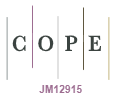Australian healthcare providers’ awareness of and practices related to vaccine safety surveillance
Nicola Carter A B * , Catherine King A C , Lucy Deng A C , Nicholas Wood A C Helen Quinn A CA
B
C
Abstract
Healthcare providers play a critical role in increasing vaccine coverage and public confidence in the safety of vaccines. The SARS-CoV-2 pandemic and COVID-19 vaccine responses have posed unique challenges to vaccine safety surveillance and community confidence in immunisation. The need to maintain confidence for high vaccine uptake, reinforces the need for a holistic, robust approach to post-licensure vaccine safety surveillance. This study aimed to examine healthcare providers’ perceptions of vaccine safety surveillance.
A cross-sectional study with Australian healthcare providers was conducted between November and December 2021. General practitioners, nurses, and pharmacists in current or previous roles administering vaccines were invited to participate in an online survey that assessed their awareness of, and practices related to, vaccine safety surveillance systems. The survey was disseminated via healthcare provider professional networks.
Of the 562 completed surveys, 552 were included in the analysis. The majority of the healthcare providers (96%) reported being aware that Australia has mechanisms in place to monitor the safety of vaccines after they are approved for use. However, almost a third of participants were not aware of the AusVaxSafety active vaccine safety surveillance system. Among healthcare providers, nurses were more aware of surveillance systems and reported the highest utilisation of vaccine safety surveillance data in their clinical practice. Participants reported confidence in the safety of vaccines as a result of the existence of vaccine safety surveillance systems.
Healthcare providers in this study showed confidence in the safety of vaccines. However, our findings indicate that despite providers demonstrating increased confidence as a result of the existence of vaccine safety surveillance systems, further efforts should be made to increase immunisation providers’ awareness of the systems, particularly in regards to the accessibility and utility of AusVaxSafety vaccine safety data.
Keywords: Active vaccine safety surveillance, passive (spontaneous) vaccine safety surveillance, vaccine safety surveillance systems, Therapeutic Goods Administration, AusVaxSafety.
References
1 World Health Organization. Causality assessment of an adverse event following immunization (AEFI): User manual for the revised WHO classification, 2nd edn. 2019 update. Available at https://www.who.int/publications/i/item/9789241516990 [cited 21 March 2025]
2 NSW Health. Adverse events following immunisation (AEFI). 2023. Available at https://www.health.nsw.gov.au/immunisation/Pages/aefi.aspx [cited 21 March 2025]
3 Australian Government Department of Health and Aged Care. Vaccine safety. 2023. Available at https://www.health.gov.au/topics/immunisation/about-immunisation/vaccine-safety [cited 21 March 2025]
4 Parrella A, Braunack-Mayer A, Gold M, Marshall H, Baghurst P. Healthcare providers’ knowledge, experience and challenges of reporting adverse events following immunisation: a qualitative study. BMC Health Serv Res 2013; 13: 313.
| Crossref | Google Scholar | PubMed |
5 Buttery JP, Clothier H. Information systems for vaccine safety surveillance. Hum Vaccin Immunother 2022; 18: 2100173.
| Crossref | Google Scholar |
6 Cashman P, Macartney K, Khandaker G, et al. Participant-centred active surveillance of adverse events following immunisation: a narrative review. Int Health 2017; 9: 164-76.
| Crossref | Google Scholar | PubMed |
7 Australian Government Department of Health and Aged Care. Vaccine safety in Australia: AusVaxSafety summary report 2022 (2024). Available at https://www.health.gov.au/sites/default/files/2024-02/vaccine-safety-in-australia-ausvaxsafety-summary-report-2022.pdf [cited 21 March 2025]
8 Brewer NT, Chapman GB, Rothman AJ, Leask J, Kempe A. Increasing Vaccination: Putting Psychological Science Into Action. Psychol Sci Public Interest 2017; 18: 149-207.
| Crossref | Google Scholar | PubMed |
9 Deng L, Glover C, Dymock M, et al. The short term safety of COVID-19 vaccines in Australia: AusVaxSafety active surveillance, February – August 2021. Med J Aust 2022; 217: 195-202.
| Crossref | Google Scholar | PubMed |
10 Therapeutic Goods Administration. COVID-19 vaccine safety monitoring and reporting. 2021. Available at https://www.tga.gov.au/products/covid-19/covid-19-vaccines/covid-19-vaccine-safety-monitoring-and-reporting [cited 21 March 2025]
11 Phillips A, Carlson S, Danchin M, Beard F, Macartney K. From program suspension to the pandemic: A qualitative examination of Australia’s vaccine pharmacovigilance system over 10 years. Vaccine 2021; 39: 5968-81.
| Crossref | Google Scholar | PubMed |
12 Healthed. Leading education provider for GPs and healthcare professionals. Available at https://www.healthed.com.au/ [cited 21 March 2025]
13 Kaufman J, Bagot KL, Hoq M, et al. Factors Influencing Australian Healthcare Workers’ COVID-19 Vaccine Intentions across Settings: A Cross-Sectional Survey. Vaccines (Basel) 2021; 10: 3.
| Crossref | Google Scholar | PubMed |
14 Therapeutic Goods Administration. TGA stakeholder survey report 2023. 2023. Available at https://www.tga.gov.au/sites/default/files/2023-12/tga-stakeholder-survey-report-2023_0.pdf [cited 21 March 2025]
15 Blyth CC, Richmond PC, Jacoby P, et al. The impact of pandemic A(H1N1)pdm09 influenza and vaccine-associated adverse events on parental attitudes and influenza vaccine uptake in young children. Vaccine 2014; 32: 4075-81.
| Crossref | Google Scholar | PubMed |
16 Abdi I, Bolsewicz K, Bullivant B, Marques MD, Steffens MS. Understanding the factors that influence communication about COVID-19 vaccines with patients: Perspectives of Australian immunisation providers. Vaccine X 2023; 14: 100304.
| Crossref | Google Scholar |
17 Leask J, Kinnersley P, Jackson C, et al. Communicating with parents about vaccination: a framework for health professionals. BMC Pediatr 2012; 12: 154.
| Crossref | Google Scholar | PubMed |
18 Leask J, Carlson SJ, Attwell K, et al. Communicating with patients and the public about COVID-19 vaccine safety: recommendations from the Collaboration on Social Science and Immunisation. Med J Aust 2021; 215: 9-12.e1.
| Crossref | Google Scholar | PubMed |
19 Truong DT, Dionne A, Muniz JC, et al. Clinically Suspected Myocarditis Temporally Related to COVID-19 Vaccination in Adolescents and Young Adults: Suspected Myocarditis After COVID-19 Vaccination. Circulation 2022; 145: 345-56.
| Crossref | Google Scholar | PubMed |
20 Greinacher A, Thiele T, Warkentin TE, et al. Thrombotic Thrombocytopenia after ChAdOx1 nCov-19 Vaccination. N Engl J Med 2021; 384: 2092-101.
| Crossref | Google Scholar | PubMed |


